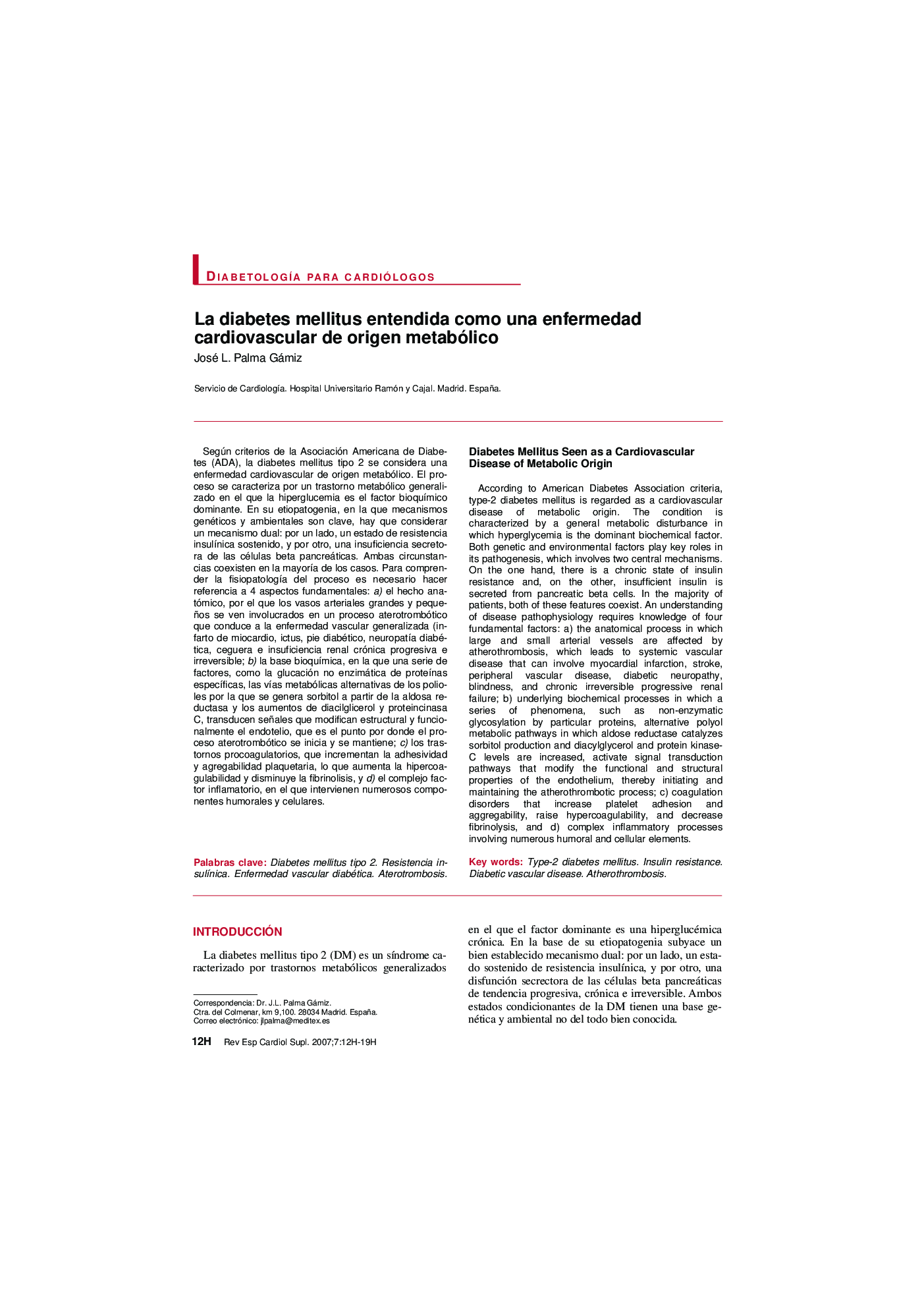| Article ID | Journal | Published Year | Pages | File Type |
|---|---|---|---|---|
| 3019633 | Revista Española de Cardiología Suplementos | 2007 | 8 Pages |
Abstract
According to American Diabetes Association criteria, type-2 diabetes mellitus is regarded as a cardiovascular disease of metabolic origin. The condition is characterized by a general metabolic disturbance in which hyperglycemia is the dominant biochemical factor. Both genetic and environmental factors play key roles in its pathogenesis, which involves two central mechanisms. On the one hand, there is a chronic state of insulin resistance and, on the other, insufficient insulin is secreted from pancreatic beta cells. In the majority of patients, both of these features coexist. An understanding of disease pathophysiology requires knowledge of four fundamental factors: a) the anatomical process in which large and small arterial vessels are affected by atherothrombosis, which leads to systemic vascular disease that can involve myocardial infarction, stroke, peripheral vascular disease, diabetic neuropathy, blindness, and chronic irreversible progressive renal failure; b) underlying biochemical processes in which a series of phenomena, such as non-enzymatic glycosylation by particular proteins, alternative polyol metabolic pathways in which aldose reductase catalyzes sorbitol production and diacylglycerol and protein kinase-C levels are increased, activate signal transduction pathways that modify the functional and structural properties of the endothelium, thereby initiating and maintaining the atherothrombotic process; c) coagulation disorders that increase platelet adhesion and aggregability, raise hypercoagulability, and decrease fibrinolysis, and d) complex inflammatory processes involving numerous humoral and cellular elements.
Keywords
UKPDScLDLdiabetic vascular diseaseDM2DCCTHTAHVIOMSAterotrombosisAtherothrombosisAmerican Diabetes AssociationÓxido nítricotype-2 diabetes mellitusDiabetes mellitus tipo 2organización mundial de la saludAgeHipertensión arterialUnited Kingdom Prospective Diabetes StudyResistencia insulínicaInsulin resistanceHipertrofia ventricular izquierdaADADiabetes Control and Complications Trial
Related Topics
Health Sciences
Medicine and Dentistry
Cardiology and Cardiovascular Medicine
Authors
José L. Palma Gámiz,
